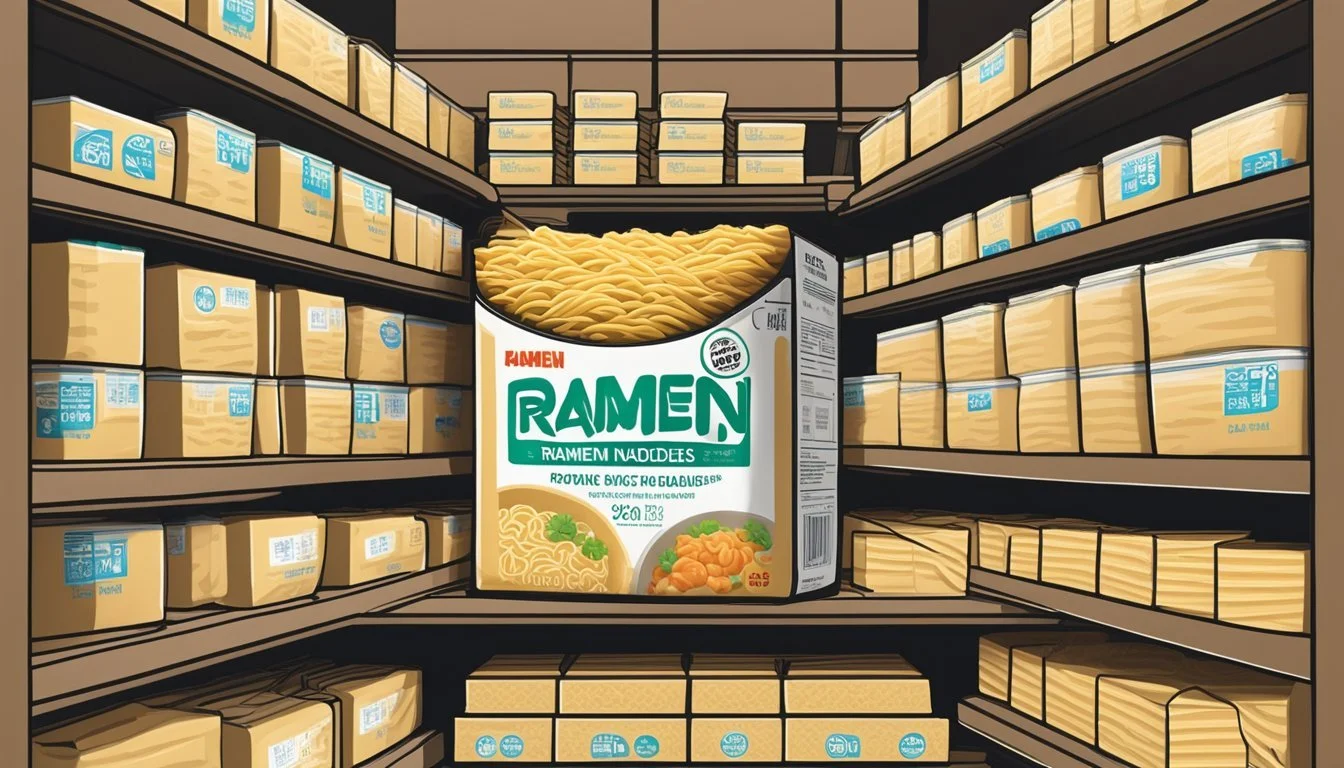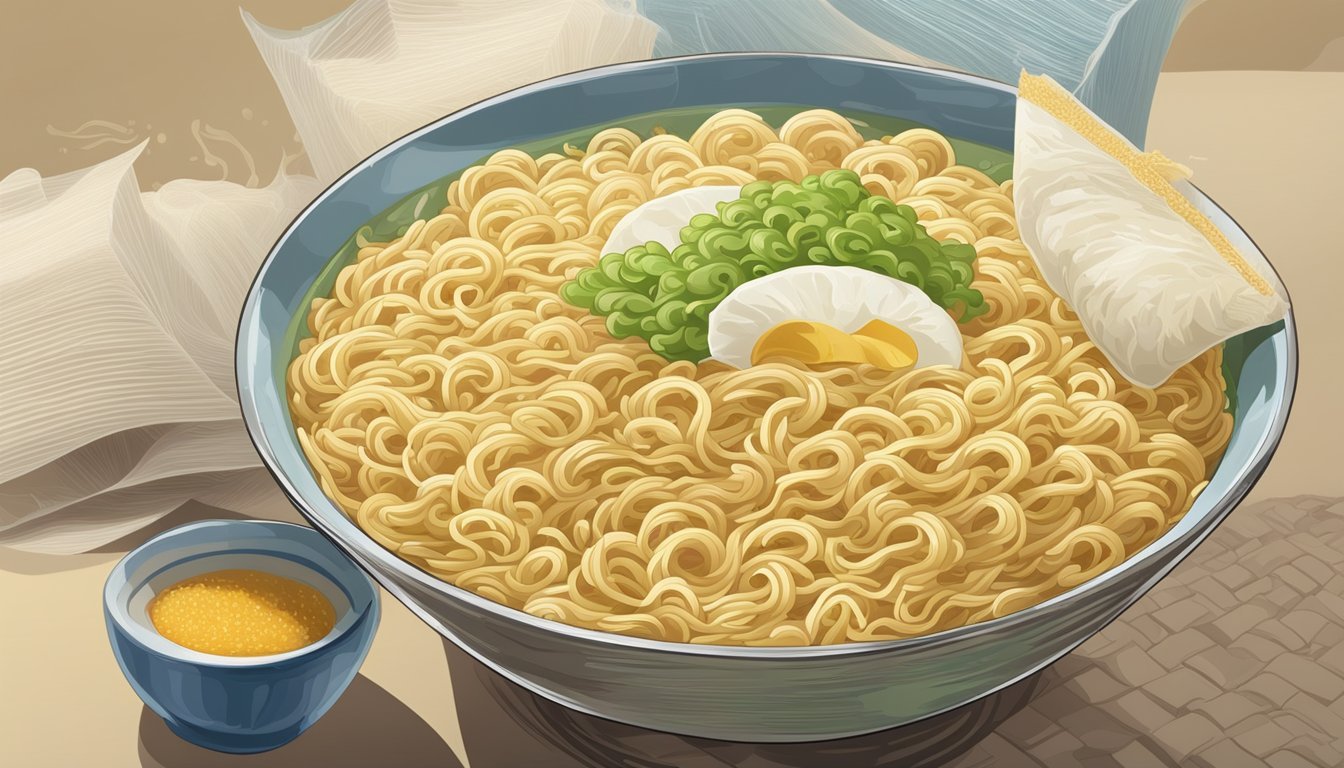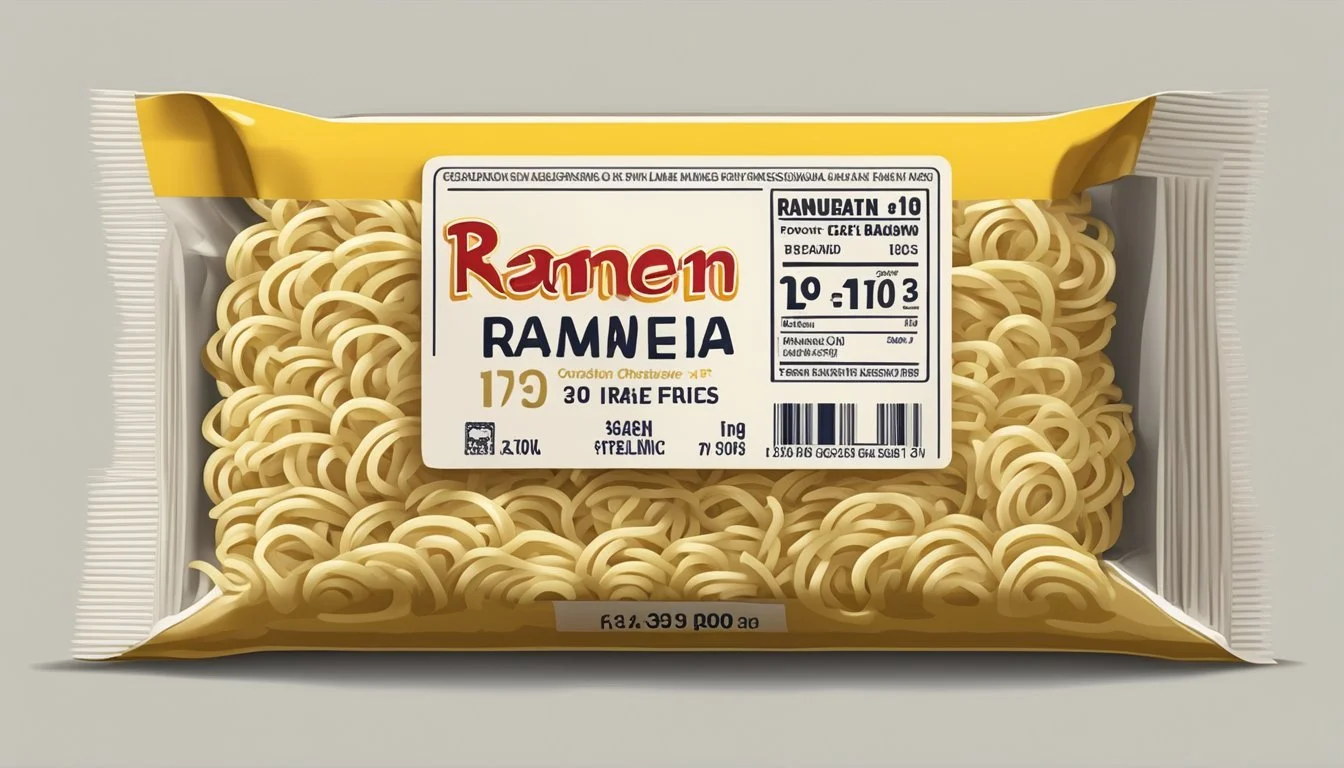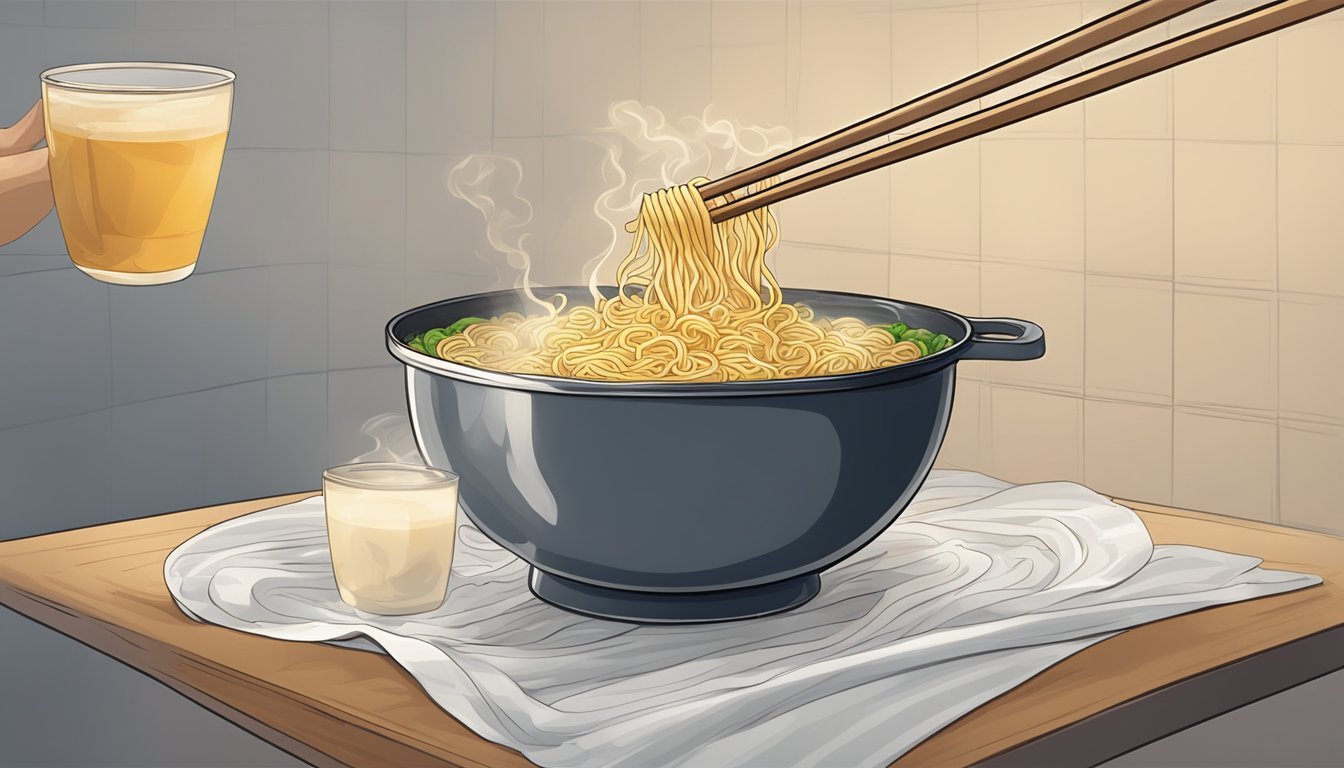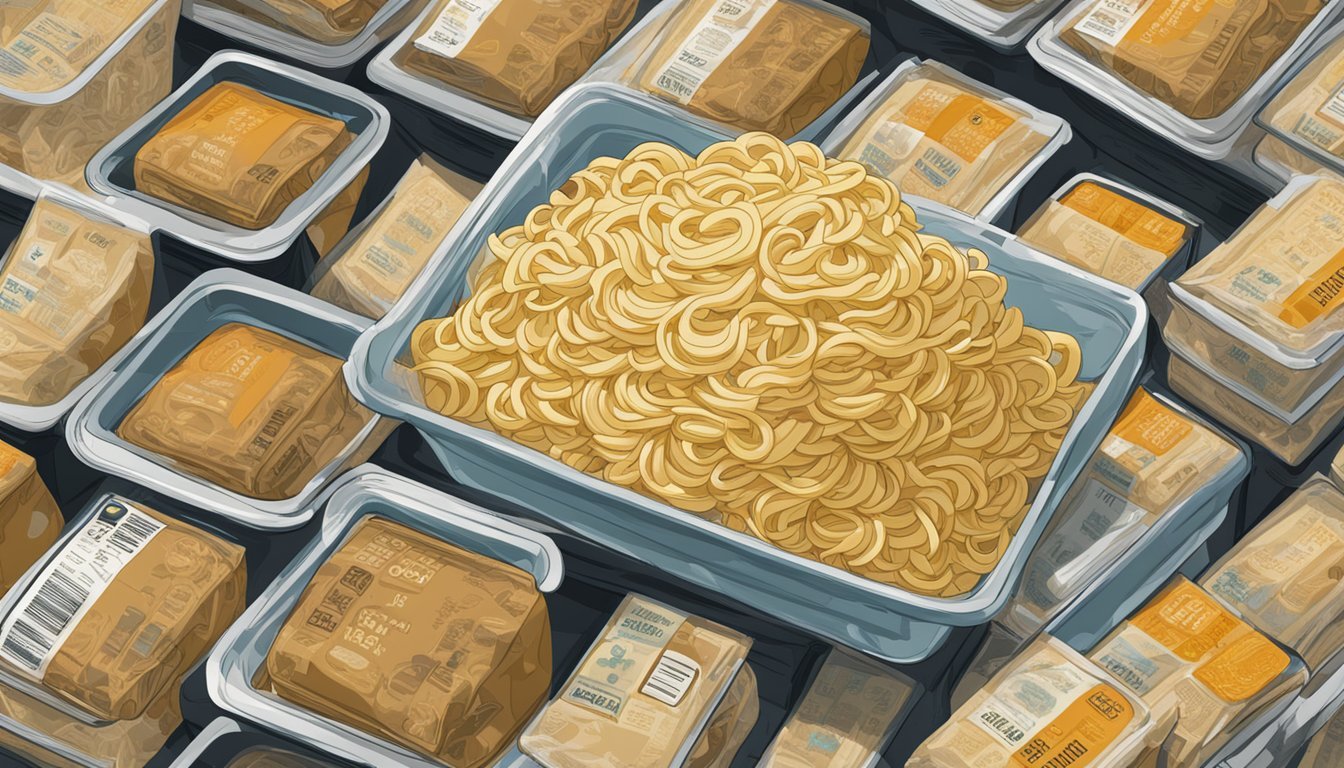How Long Do Ramen Noodles Last
Shelf Life and Storage Tips
Ramen noodles (how long do ramen noodles last?), a staple in pantries around the globe, are known for their convenience and long shelf life. These noodles have become a go-to quick meal for students, busy professionals, and anyone in need of a filling dish with minimal prep time. Integral to their appeal is their remarkable shelf life, attributed largely to the preservatives they contain and their shelf-stable nature. Typically, ramen noodle packages are marked with a best by date which generally suggests consumption within two years for optimal taste and texture.
While the best by date provides a guideline, it's not an absolute indicator of safety or quality. Ramen noodles often remain safe to eat beyond this date. The preservatives help to prolong their edibility, ensuring they can be stored safely for an extended period when kept in a cool, dry place. Consumers can usually expect these noodles to maintain quality for several months past the best by date, although the exact time frame can vary depending on storage conditions and the specific product.
Understanding Ramen Noodles
Ramen noodles, a staple found in pantries around the world, vary in types and preparation methods. With their origins rooted in Japanese cuisine, these noodles have undergone significant transformation to become the versatile food product enjoyed globally today.
Types of Ramen Noodles
There are two main categories of ramen noodles: instant noodles and fresh noodles. Instant noodles are known for their convenience and long shelf life. They are often pre-cooked, flavored, and dried, requiring only brief heating or soaking in hot water to prepare. Fresh noodles, on the other hand, are typically made from wheat flour and water, and sometimes include kansui, a type of alkaline mineral water, which imparts a distinctive texture and flavor. Fresh ramen noodles must be cooked in boiling water for a longer period than their instant counterparts before they are ready to eat.
Manufacturing Process
Instant noodles undergo a unique manufacturing process that extends their shelf life and simplifies preparation. The process includes mixing, rolling, cutting, and steaming the dough formed from wheat flour and various ingredients. After steaming, the noodles are often air-dried or flash-fried to remove moisture, which makes them shelf-stable. Fresh noodles, while they may share the early steps of mixing and rolling with instant noodles, are not subjected to the same drying processes and thus have a significantly shorter shelf life. They are typically sold refrigerated and need to be consumed within a few days to a week, or as indicated by their packaging.
Shelf Life of Ramen Noodles
The shelf life of ramen noodles is influenced by the type and storage conditions. Instant ramen typically has a longer shelf life due to preservatives, while fresh ramen has a shorter shelf life and requires refrigeration.
Instant Ramen Noodles
Instant ramen noodles, due to food preservation techniques, such as the use of preservatives and dehydrating processes, have a best by date often ranging from eight months to two years from the manufacturing date. While the quality might not be optimal past this date, they are non-perishable and can still be safe to consume for some time after, provided they are stored in a dry and cool environment to prevent moisture—which leads to mold—and spoilage.
Expiration date: Typically two years from production
Storage: Dry, cool environment to prevent spoilage
Fresh Ramen Noodles
Fresh ramen noodles lack the preservatives found in instant varieties and therefore have a significantly shorter shelf life. They should typically be consumed by the expiration date marked on the package, which usually indicates they can last for up to one week when refrigerated. Fresh ramen noodles may last up to a month when frozen, but their quality can deteriorate due to ice crystals and freezer burn.
Expiration date: Up to one week refrigerated, longer if frozen
Best by date: Indicated on package and based on refrigeration
Always check ramen noodles for signs of spoilage, such as a sour smell, discoloration, or the presence of mold, regardless of the type, and discard any packets that show these signs.
Factors Affecting Shelf Life
The longevity of ramen noodles is influenced by packaging integrity and storage environment, which are essential to preserve their quality and edibility.
Packaging Effectiveness
Ramen noodles' shelf life largely depends on their packaging. Effective packaging should be air-tight, protecting the noodles from moisture, humidity, and insects. Intact packaging also shields the product from sunlight and other external conditions that could degrade the noodles' quality.
Storage Conditions
Ideal storage conditions play a pivotal role in the shelf life of ramen noodles. Storing them in a cool, dry place is crucial to prevent spoilage. Exposure to high temperatures, moisture, or humidity can accelerate the staling process. Conversely, keeping ramen noodles in an airtight container can further extend their shelf life while preserving their taste and texture.
Proper Storage Practices
The longevity of ramen noodles significantly depends on the storage methods utilized. Proper storage can extend the shelf life, maintaining the noodles' quality and safety.
Room Temperature Storage
For unopened ramen noodle packets, room temperature storage in a pantry is sufficient. They should be kept in a cool, dry area away from direct sunlight. Ramen noodles can last several months past the expiration date when stored properly. It is recommended to place them in airtight containers if the original packaging is damaged or not resealable.
Refrigeration
Once opened or cooked, ramen noodles should be stored in the refrigerator to extend freshness. Place them in airtight containers or sealable bags to prevent moisture and other contaminants. Refrigerated cooked ramen noodles are best consumed within 2-3 days to ensure quality and safety.
Freezing Ramen Noodles
Ramen noodles can be stored in the freezer for long-term preservation. To freeze, one should first allow the noodles to cool completely if they are cooked. Then, they should be portioned into airtight containers or freezer bags, eliminating as much air as possible before sealing. Frozen ramen noodles can be kept for up to 2 months for optimal taste and texture.
Identifying Spoiled Ramen Noodles
When ramen noodles spoil, they exhibit certain visual and olfactory signs. It's important for the consumer to recognize these indicators to avoid the potential for illness due to consumption of spoiled foods.
Visual Signs of Spoilage
Spoilage of ramen noodles can often be detected by examining their appearance. Look for the following:
Mold Growth: Visible spots or fuzzy areas of mold in various colors indicate spoilage.
Discoloration: Any significant changes in color from the original noodle hue suggest decomposition.
Olfactory Indicators of Spoilage
A person can also detect spoiled noodles by their smell. Signs include:
Rancid Odor: An off or unusual smell, particularly one that is musty or rancid, can signal that the noodles are no longer viable for consumption.
Health Considerations
When considering the consumption of expired ramen noodles, one must be aware of the potential health risks and the correct measures to prevent foodborne illness. Safety is paramount, and understanding these considerations is key to ensuring the health of consumers.
Risks of Consuming Spoiled Ramen
Expired ramen noodles can potentially lead to foodborne illness if they have spoiled. Spoilage can be identified by a change in texture, color, or an off smell. Health risks include symptoms ranging from mild gastrointestinal discomfort to severe food poisoning. While ramen noodles have a long shelf life, consumers should be cautious of these signs:
Visual Inspection: Discoloration or the presence of mold indicates spoilage.
Smell Test: An unusual or foul odor is a clear sign that ramen noodles should not be consumed.
Texture Change: If the noodles have a slimy or unusually sticky texture after cooking, they may be unsafe for consumption.
Preventing Food Poisoning
To ensure food safety and minimize the risk of foodborne illness, consumers should follow these guidelines:
Proper Storage: Keep ramen noodles in a cool, dry place to extend their shelf life and prevent spoilage.
Expiry Date: While it could be safe to eat ramen noodles past the expiration date, one should assess their condition using the above checks to make sure.
Cooking Practices: Cook ramen noodles thoroughly to kill any potential bacteria that might have developed, especially if they are past their expiration date.
By adhering to these simple food safety protocols, consumers can enjoy ramen noodles even after their expiration date with minimal health risk.
Cooking and Consumption
When preparing and consuming ramen noodles, the method of cooking and the ingredients added can significantly affect both the flavor and the nutritional value of the dish. These factors are essential to consider for an optimal eating experience.
Preparing Ramen Noodles
To prepare ramen noodles, one typically begins by boiling water in a pot. Once boiling, the noodles are added and should be cooked according to the packet's instructions, usually for about 3-5 minutes. The goal is to achieve a balance between tenderness and firmness, known as "al dente" in pasta terms. Overcooking can lead to mushy noodles that lack texture.
Adding Ingredients
While the noodles are cooking, many choose to enhance the soup by adding various ingredients to elevate the taste and nutritional content:
Seasoning: Most ramen packets come with a seasoning pouch. It's important to mix it well to ensure even distribution throughout the soup.
Proteins: Options like slices of cooked pork, chicken, or tofu can be added for additional protein.
Vegetables: Greens like spinach or bok choy, corn, and bamboo shoots contribute vitamins and fiber.
Extras: For more complex flavors, consider incorporating mushrooms, seaweed, or a soft-boiled egg.
Each addition should be carefully considered to not only complement the taste but also maintain a balanced nutritional profile.
Creative Uses for Expired Ramen
While expired ramen is not advisable for regular consumption, one may leverage it in a variety of non-traditional ways. This can be particularly practical for expired noodles, preserving their utility beyond the kitchen.
Alternative Recipes
Expired ramen noodles may not be ideal for a classic soup dish, but they can be repurposed for alternative recipes. One might consider using the noodles as a crunchy topping for salads after baking them in the oven to ensure they are dry and crisp. Alternatively, combining fine pieces of the noodles with breadcrumbs can provide a unique texture for meatloaf or as a coating for fried foods (What wine goes well with fried foods?).
Seasoning Packet Applications
The seasoning packet included with ramen can have multiple applications beyond flavoring noodles. These packets can serve as a marinade or rub for meats, imparting a savory or spicy taste. They are also useful for flavoring stir-fried or roasted vegetables, giving a new life to the seasoning that originally accompanied the cup noodles. Apply the packets while cooking in a microwave or on a stove to infuse these flavors into a variety of dishes.
Myths and Facts
Ramen noodles have amassed various myths regarding their durability and health aspects. This section demystifies common misconceptions about the shelf life and nutritional value of ramen noodles, often marketed as a non-perishable survival food.
Shelf Life Exaggerations
It is a myth that ramen noodles last indefinitely. While they can outlive their expiration date, they ideally stay good for 4-12 months past that date if they are stored in a cool, dry place. The belief that ramen noodles are an eternal survival food is overstated—though dehydrated, they do degrade over time.
Fact: Ramen noodles are best consumed within a year after their expiration, provided they have been stored properly.
Storage Tip: Keep unopened ramen in an airtight container to extend their shelf life.
Nutritional Misconceptions
Ramen noodles are primarily composed of carbohydrates and sodium, a fact often misunderstood. They provide quick energy due to their high carbohydrate content, but one should not mistake them for a nutrient-rich meal. Some may think that ramen noodles are entirely devoid of nutrition, which isn't true; they do contain some vitamins and minerals, though not in significant amounts.
Fact: Despite being a convenient food source, ramen noodles should not form the basis of one's diet, due to the high sodium content and moderate nutritional value.
Health Tip: To increase nutritional value, add vegetables, meats, or eggs when preparing ramen noodles.

